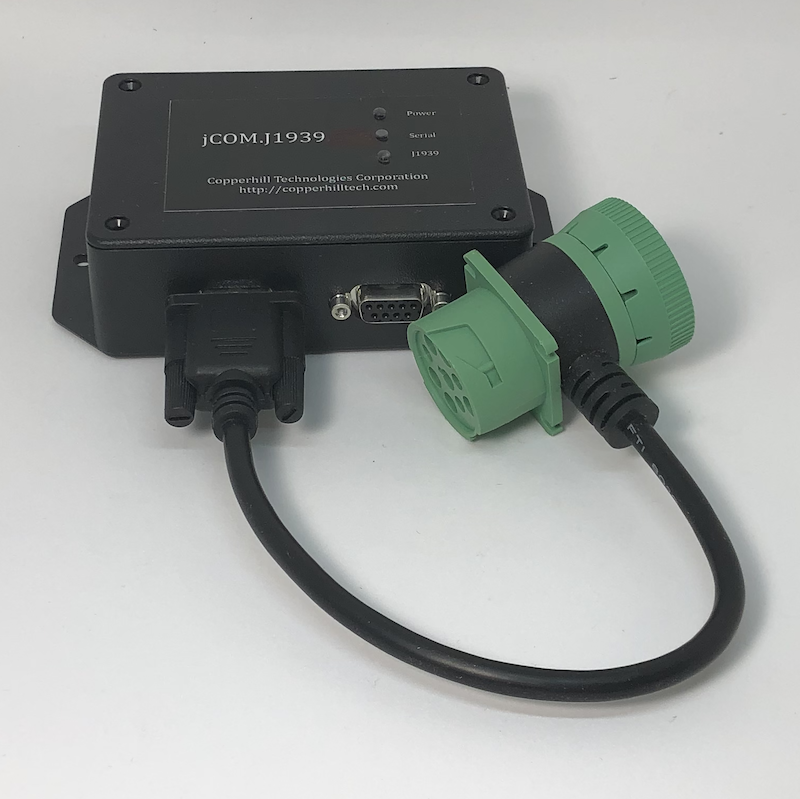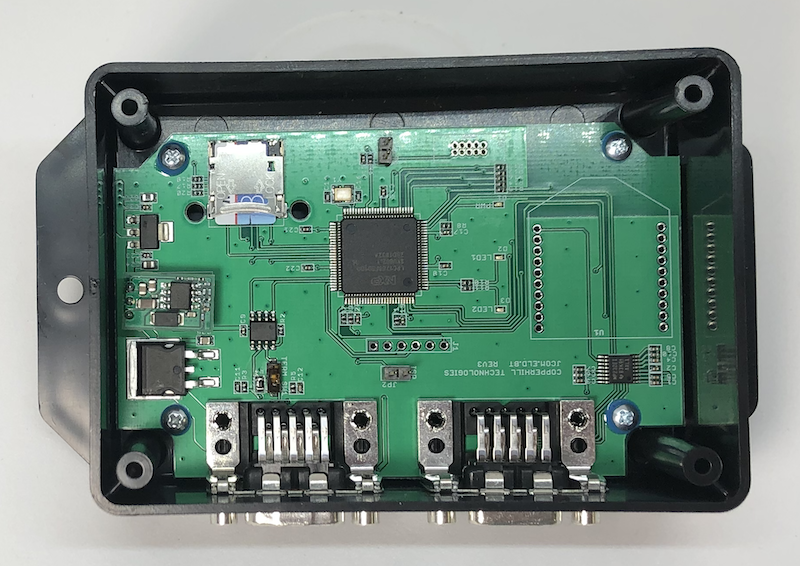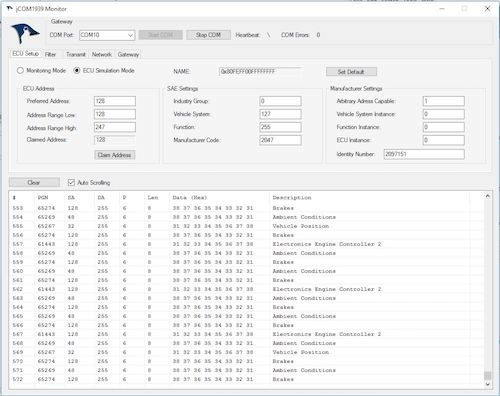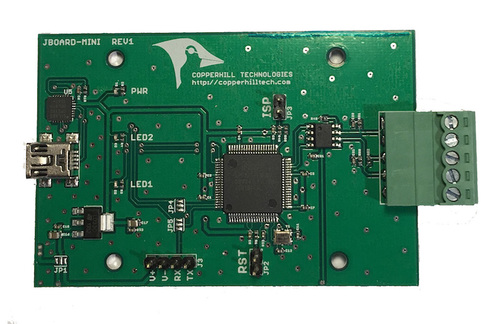Recent Posts
SAE J1939 Programmable Data Traffic Simulator For Generating Diesel Engine Signals (PGNs)
Posted by on

The following represents an update on our current development activities, in this case the jCOM.J1939 Programmable Data Traffic Simulator (a first prototype is shown in the image to the left).
In short, the plan is that the device is being set up by means of a Windows software and then runs the programmed PGNs (Parameter Group Numbers) independently, i.e. disconnected from the Windows PC.
The jCOM.J1939 device will simulate any PGN, including Transport Protocol messages (TP - Messages longer than eight bytes) and it will also allow the programming of request responses.
For this project, we will use an existing and proven hardware plus the extension to an existing device firmware and the associated Windows programming software, which both are under current development.
The Hardware
The jCOM.J1939 device is based on our standard design, an embedded system with an ARM Cortex-M3 processor (LPC 1768) plus CAN interface and integrated SAE J1939 protocol stack.
The operating temperature range lies between -25C to +85C (the -25C limitation is due to the integrated SD memory card, otherwise the device can operate down to -40C).
The power is supplied either through an open-ended DSUB-9 cable or (as demonstrated in above image) an SAE J1939 9-pin Deutsch connector. The input power can range from 7 VDC to 36 VDC, thus making the unit compatible with diesel engine environments.
Device Programming
The device can be programmed through a standard RS232-to-USB converter cable (included in the scope of delivery), which is connected to a Windows PC. The PC, in turn, runs our jCOM1939 Monitor Software, which is a great tool to monitor, record, analyze, and simulate SAE J1939 data traffic.
This comprehensive and easy-to-use, easy-to-understand Windows software displays not only SAE J1939 data traffic; it also allows to scan the network, simulate an ECU (incl. full node address negotiation features), and respond to data request messages.
That also means, that the user will be able test the PGN setup under a Windows environment before running the device separated from the PC.
The task that lies in front of us is adding network simulation to the software and store the result into the device's onboard SD card. The current software version allows the simulation of one ECU (i.e. one node address), including address negotiation. The Network Simulator will allow the setup of multiple node addresses and their associated PGNs.
Pricing And Release
The price for the jCOM.J1939 device will be US$199.00 with free shipping within the United States (US$20 Shipping costs to Canada).
The targeted release date is between end of July and mid of August 2019, which may change due to shifting priorities. For updates, please sign up for our forum as indicated below.
More Resources
- SAE J1939 Simulator Generates Frequently Used SAE J1939 Signals (PGNs) For Diesel Engines...
- Simulating SAE J1939 PGNs Used By Truck & Bus FMS (Fleet Management System) Standard...
For more information and updates, please feel free to contact us anytime, or sign up for the Copperhill Technologies Forum where we post updates.
SAE J1939 ECU Simulator Board With USB Port
The jCOM.J1939.USB gateway board is a high-performance, low-latency vehicle network adapter for SAE J1939 applications. It enables any host device with a USB COM port to monitor and record SAE J1939 data traffic and interact with an SAE J1939 vehicle network.
The board maintains the full SAE J1939 protocol according to J1939/81 Network Management (Address Claiming) and J1939/21 Transport Protocol (TP). A comprehensive programming interface supports the development of Windows and Linux/Ubuntu applications, including full C/C++/C# source code for short time-to-market developments.
 Loading... Please wait...
Loading... Please wait...



